Cellographic
Where do you live: Portland, Oregon
Your education: 15 years of cello private instruction; studied sculpture at Mass Art; Masters in Teaching from Marylhurst University
Describe your art in three words: Audio · Visual · Storytelling
Your discipline: Cello Performance, Fine Art (Sculpture), and Video Editing
Website | Instagram
How did the idea of transforming a traditional cello into a translucent, projection-based instrument first come to you?
It began with a very different idea. My original plan was to rebuild a cello out of translucent acrylic, embedding music-sequenced LEDs and a reflective backing to create an infinity-mirror cello. During construction, I realized that while visually striking, it felt limited—more of a novelty than a work of art. I wanted to create something with greater artistic depth.
My build partner, Keith Vic, and I started brainstorming new directions. Our next idea was to use the cello’s interior as a miniature art installation space for micro-artists, who could submit small sculpted environments to be placed inside the instrument. We planned to design a servo-controlled camera system with a moving fisheye lens to explore these environments, projecting the live feed onto a screen behind the performance. We’re still considering that concept for a future project.
Ultimately, we shifted toward video projection for two main reasons. First, the mechanical camera setup seemed too fragile for touring—if it failed, the whole concept would be compromised. Also, we discovered a compact, ultra–short-throw projector perfectly suited for close mounting to the cello. That technology became the key that made Cellographic possible.
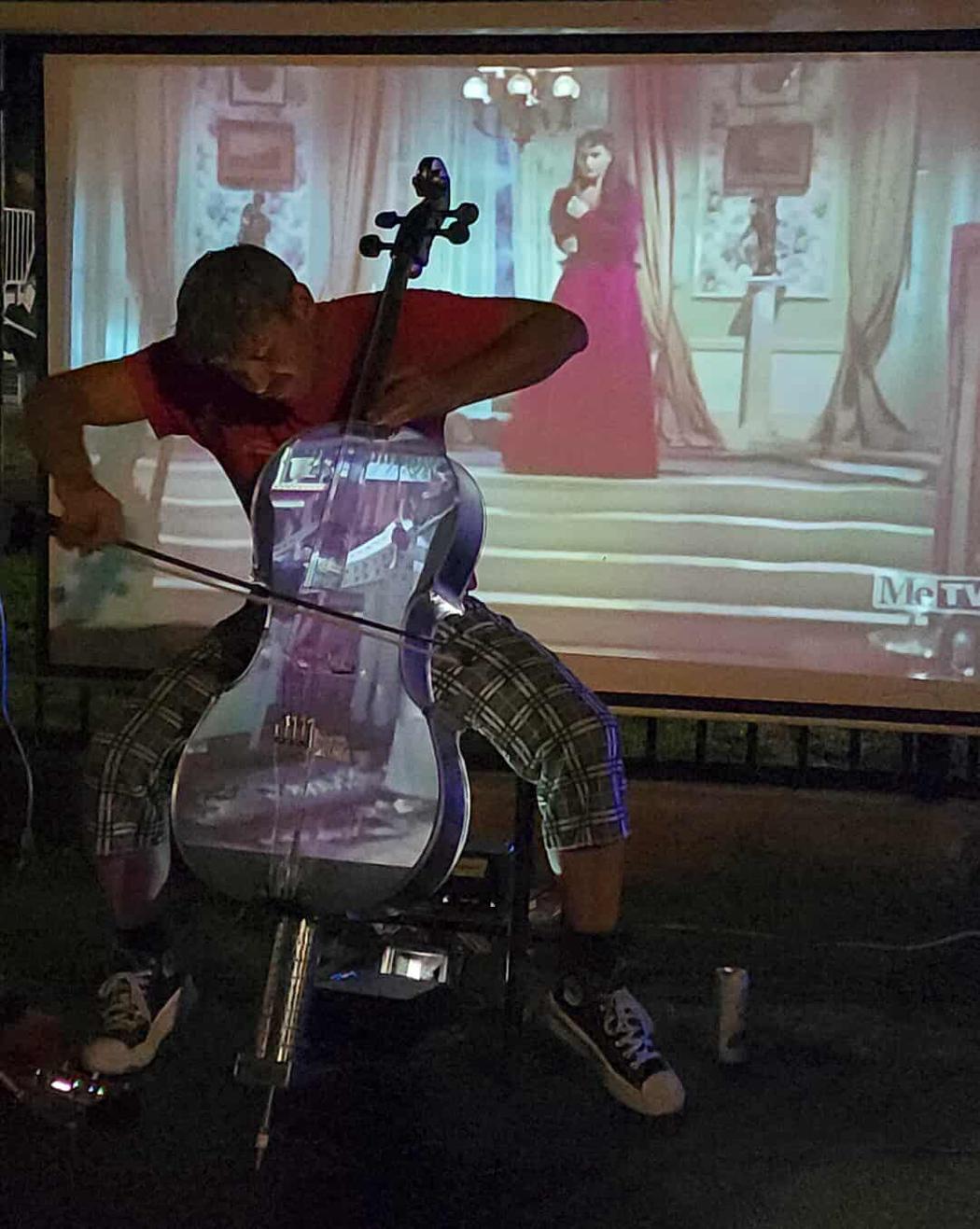
What challenges did you face when reconstructing the cello with acrylic materials, and how did you overcome them?
In the year or so that it took to develop cellographic, we would meet most a couple of times per month to spend an afternoon building the cello together. In that time we overcame a number of challenges. One challenge we had was that our first attempt at creating a translucent fingerboard was fouled by air bubbles in the resin we poured. So I created a new mold and repoured while applying some suction to pull the air bubbles from the just poured resin. Another challenge has been that Cellographic is quite heavy and cellos are not constructed to withstand the forces inherent in a project like this. Our solution was for Keith to fabricate a custom threaded and sleeved bolt system with recessed nuts that would connect rear and front panels together though the instruments original brace points, we essentially reinforced the instrument with steel rods at the same locations where the cello’s original creators had built in supports.
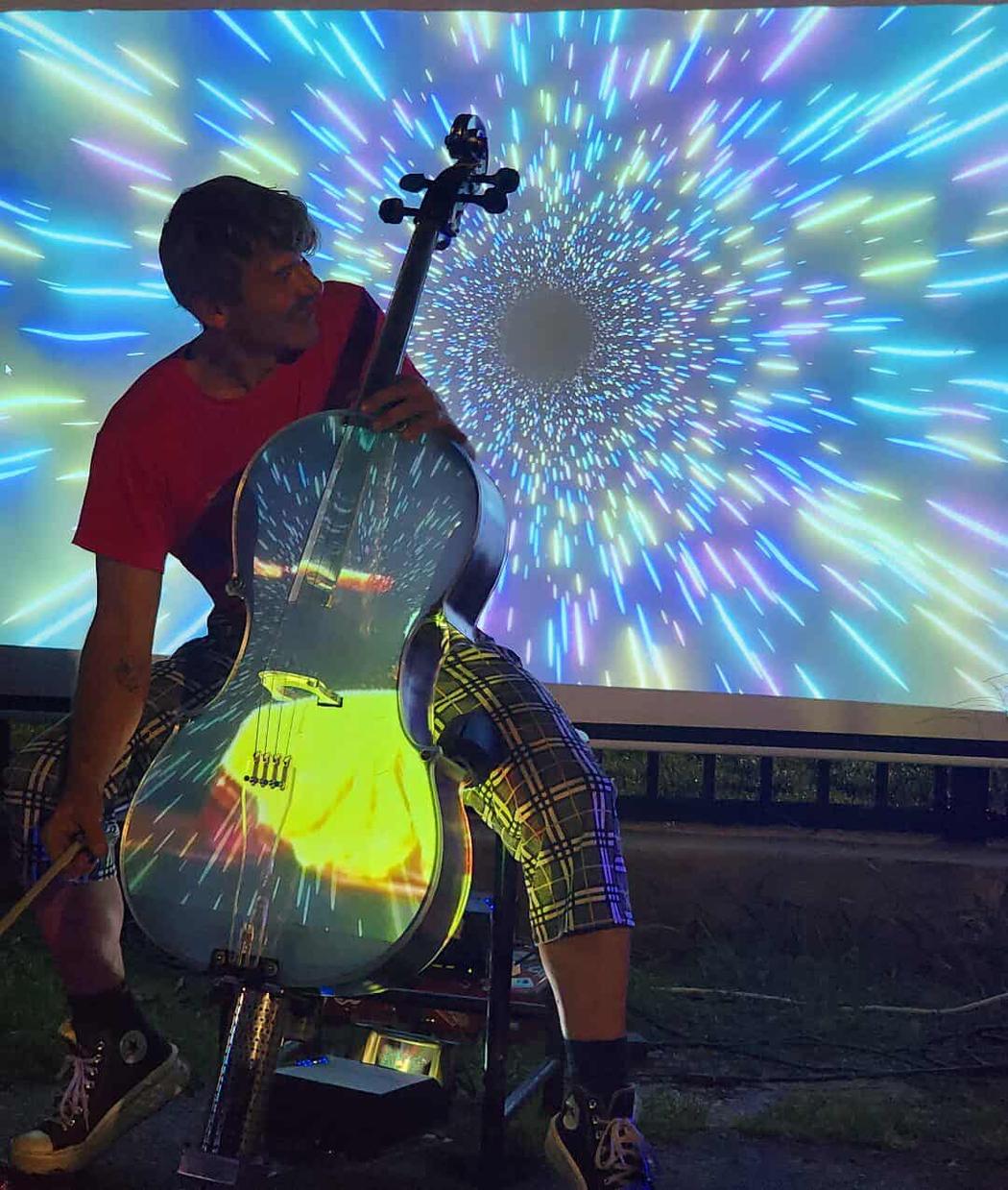
How does the projected imagery influence your music in real time? Do you compose with visuals in mind, or do visuals come after the music?
Ah what comes first, the chicken or the egg. In this case the music comes first, these themes are first improvised live in front of an audience. When I compose a theme that I really enjoy, they most often evoke feelings and visions to me. Some after performance interpretations become so strong that I won’t remember the original thought or emotion that spawned the theme, the new thought/vision becomes the meaning. A good example of this is the song Krypton, 4th song on my Apollo’s Reach LP (available on all streaming platforms except for Spotify👎). The morning I first played this song I was feeling particularly emotional, I can’t remember why. But it brought out this powerfully sad but yearning voice. After the song was performed and I was listening back to it, I imagined it being the music for a planet that was lost in an instant of destruction, an explosion that in a sudden and brief moment ended the lives of millions, an unfathomable tragedy. This song became not about that defining moment but about the dust and ashes exploding outward, the final echoes of a civilization, drifting through space and time for eternity. That meaning became fundamental to the song and greatly influences my feelings when listening to or performing the theme.
Another big part of this process was born out of a related creative project. Back in 2023, I reached a landmark moment in my music career. I had been living in some degree of isolation, at least musically. My day job and other life duties had pushed cello into the background of my life for a number of years. Between 2016 and 2023 I had only 1 public performance. I spent so much of that time honing my looping skills and developing a catalog of themes. It was in 2023 that I realized I needed to break out and get my music out into the public. As part of that outreach, I began to create music videos from vintage footage that I found on archive.org. That process of creating music, identifying/defining its core meanings, seeking footage that captures that spirit and editing it to display with my music all began in this moment. It was a powerful time. I went on an intense creative marathon effectively making 59 music videos in 59 consecutive days.I have slowed the output a bit these days but overall I created 70 music videos that can still be viewed @scottallencello on instagram and YouTube.
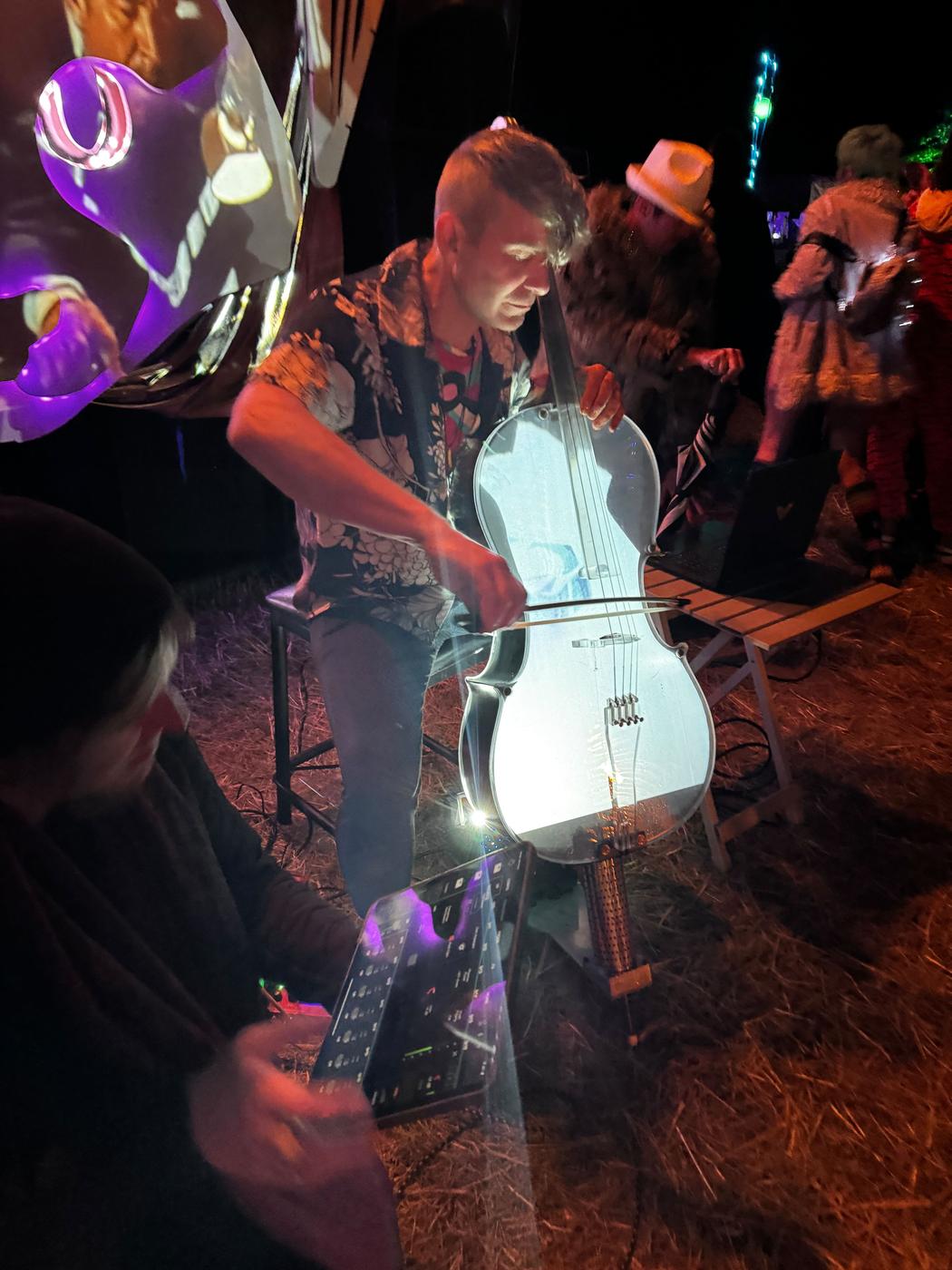
Your music blends classical training with effects, looping, and improvisation. How do you balance structure and spontaneity during live performances?
Well I am, by my nature, a very unstructured person. I have a pretty severe form of ADHD. As a result, I flow from moment to moment, neither looking far ahead or behind, like a bumble bee hopping from flower to flower. It is like this with music as well. I come to my performances with no idea what I am going to play. In any given moment, I might compose a completely new and unique theme or dial in a theme previously recorded on my looper. Once I make these choices, I simply follow where they lead. I never think my way through the process, I feel. If I’m thinking, I’m not doing my work properly and I probably won’t like what I play. It’s very essential for me as a player to enter a psychedelic, meditative dream state where my mind shuts down and my body takes over. I might think for a moment at the beginning of a tune about how I’m going to define the chord progression I’m following, but beyond that initial moment, I’m likely day dreaming, thinking what I’m going to do later or about a conversation I had the day before, meanwhile my body is playing and my observer mind has been effectively removed from control, instead it’s there to appreciate. I have moments all the time where I’m playing and a sequence goes by that I think is really cool, I’m observing it like an outsider, the thought, ‘Wow, look at that series of notes I just played’, flitting across my mind as the notes echo through the air, meanwhile my body continues on uninterrupted. So intrinsically, it’s all about the magic of spontaneity for me.
But with the Cellographic performances, since there has been pre-edited video created, I now have to go into my performance with a loop in mind and a trajectory for that loop that fits the content. This has been an interesting learning process. One that I am still responding to. This project is in constant development and I fully expect that this project’s relationship of music and video will continue to evolve as I collaborate with other artists and as the project matures.
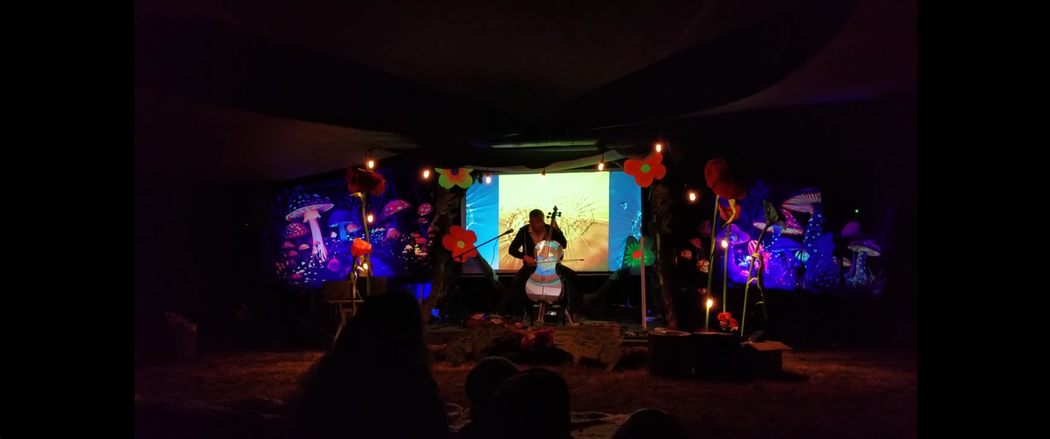
You describe your style as “psychedelic thematic space cowboy experimental blues.” Could you elaborate on what this means to you?
Well we live in a time when everyone wants to know what your genre is. That is hard when you play my feral brand of electric cello. Is my music classical, no but it’s certainly inspired and informed by my classical upbringing. Is my music rock, no but it has beats some times and is built on repeated chords in a structure. Is it Jazz, no but often the themes meaning really takes shape after I’ve found the hook. None of these larger genre’s effectively captures what I am doing so defining my music has been a challenge. I tried to narrow it down to something digestable this description is one I’ve used because it captures some of my identity. I guess if I had to reduce myself into the smallest linguistic unit, I would call my music psych-cello or psychedelic cello because my creativity is born of that strong current of psychedelic dreams that flows through me as I play. A current of musical inspirations that flow through me like feelings.
I have lately been thinking of it as a soundtrack to life’s experiences, like themes to a day dream.
What role does storytelling play in your performances, both musically and visually?
Storytelling is to me as an interpreter is to a speaker of a foreign language. My music is without words but has meaning. The notes and the feelings that I play define an emotional journey that I share with my audience. After I’ve interpreted one of my themes, I discover a story that captures the spirit and intention of my song in ways I didn’t imagine in it’s first playing. As I mentioned with the story about the song, Krypton, this applied meaning becomes fundamental to the song as it moves away from me and to the minds of my audience.
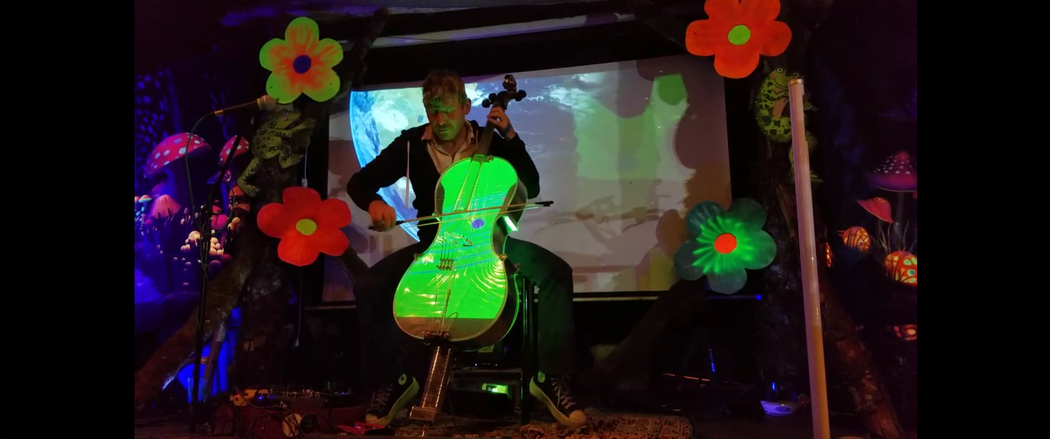
Cellographic seems to be as much about visual art as about music. Do you see yourself primarily as a musician, a visual artist, or a hybrid of both?
I am certainly a musician first. Expressing visual arts has always been important to me, a desire to create vision that evokes meaning is a very strong appeal and one that I’m constantly exploring as a graphic artist, video editor, and functional sculpturist. But performing cello is more than just an interest or desire, it satisfies a need, a need to express my heart and soul, a need to be seen in my most open and vulnerable moments, and to feel that connection with my audience, to be known in my deepest and most profound moments.

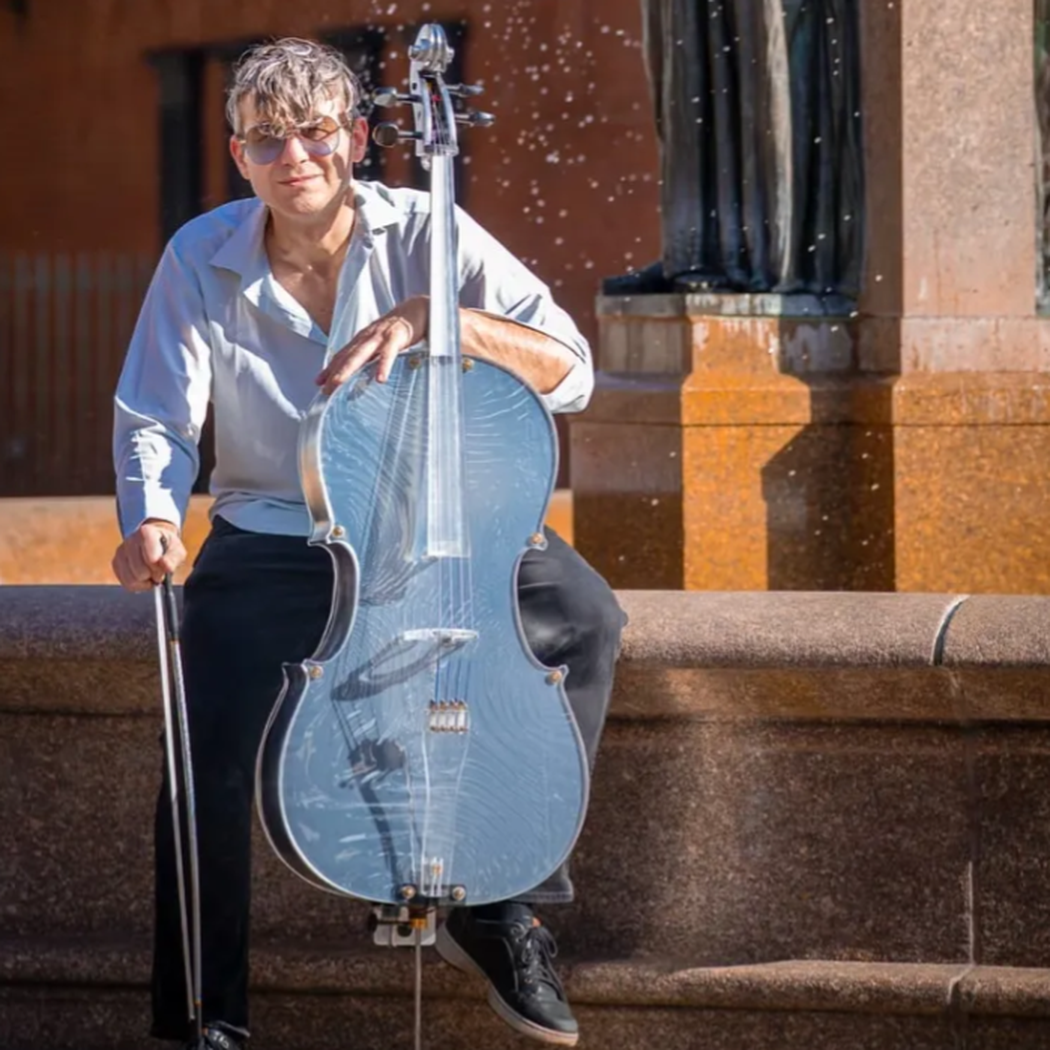
Leave a Reply